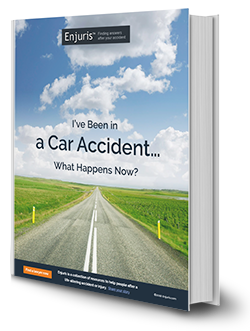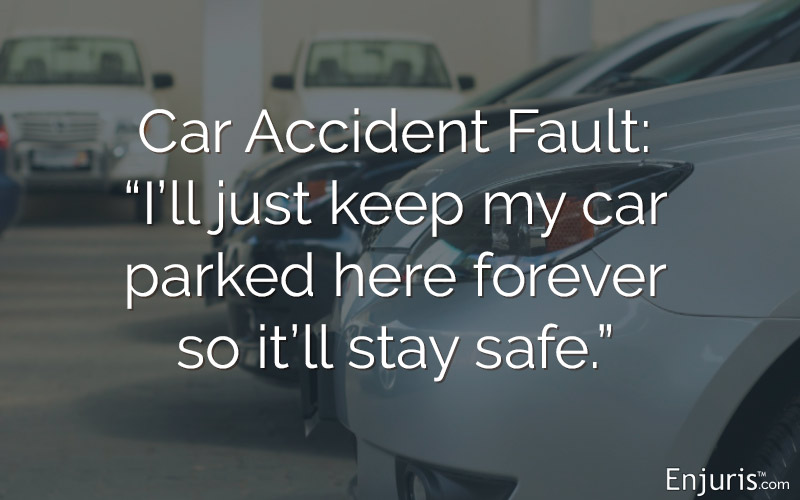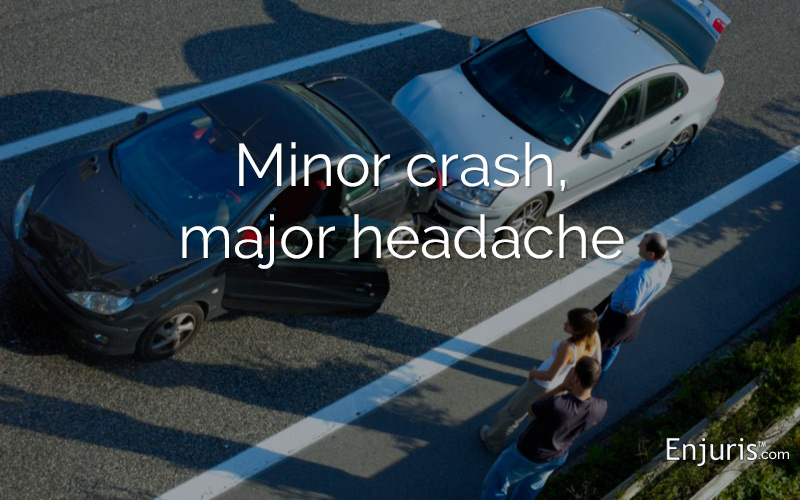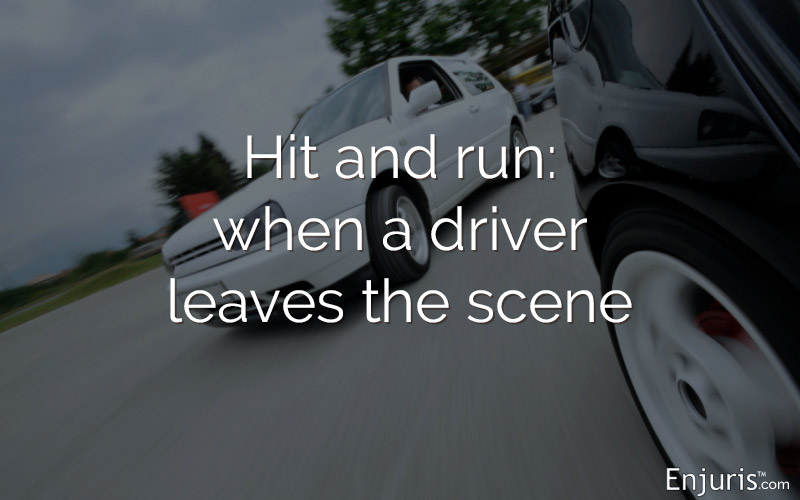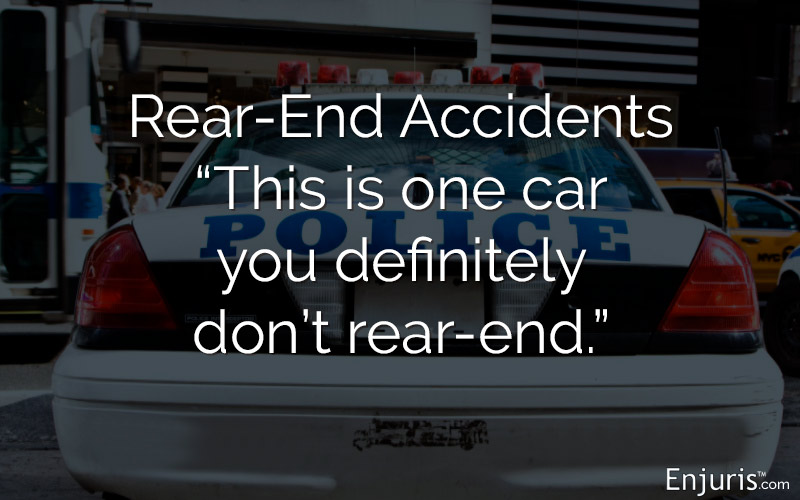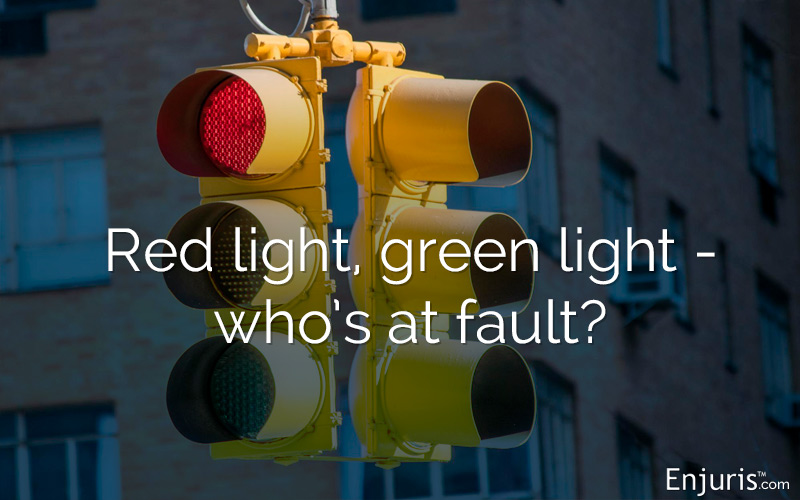Explaining at-fault laws in Michigan and auto insurance regulations
When you think of Michigan, perhaps your first thought is of the Detroit Automobile Company, which later became the Henry Ford Company — manufacturer of Ford automobiles. Detroit is headquarters to the "Big Three" American auto manufacturers: General Motors, Ford Motor Co., and Fiat Chrysler Automobiles US.
But Michigan isn't just known for cars… it's also home to Lake Michigan, 1 of the 5 Great Lakes of North America. In fact, it has the longest freshwater coastline in the country and it's the only state that touches 4 of the Great Lakes.
Fun fact: Anywhere you are in Michigan, you're no more than 85 miles from one of the Great Lakes!
If you live in or plan to visit Michigan, this means it's important to know that people are on the move. And where people travel, it's inevitable that there will be car accidents.
Let's take a look at the laws, regulations and statutes relating to Michigan car accidents.
Michigan car accident statistics
There are approximately 8 million registered vehicles in Michigan, and there are about 100 billion motor vehicle miles traveled in Michigan.
Over the past decade, there has been an average of about 297,000 Michigan car crashes each year. Of those, there's an average of around 73,000 injuries and 950 fatalities each year.
5 common types of car accidents
You can't anticipate what type of car accident you might have — if you could, you'd avoid it. Every accident is different, and your experience will be different from that of any other person.
But there are some common types of car accidents, and understanding how these accidents happen can help you avoid being involved in one.
1. Rear-end crashes
A rear-end crash happens when a vehicle collides with a vehicle in front of it. Often, a rear-end crash is caused by driver inattention, distraction, or tailgating.
Unfortunately, it's hard to prevent being rear-ended. Sometimes, there's literally nothing you can do to stop it. But you can give plenty of notice to a driver behind you that you'll need to slow or stop your car. Signaling early, checking mirrors frequently, and avoiding hard braking are good strategies that could reduce your risk of being rear-ended.
2. Head-on collisions
A head-on collision is the most likely to result in serious injuries or fatality because of the increased amount of force that affects the driver and passengers. One of the drivers in a head-on crash is usually distracted, drunk, speeding, or negligent in some other way.
3. "T-bone" accidents
This is when a vehicle crashes into the side of another vehicle, most commonly at an intersection. Often, this happens because a driver fails to stop at a signal (like a stop sign or traffic light) or fails to yield the right-of-way. Like head-on collisions, a T-bone accident can result in very serious injuries.
4. Sideswipe collisions
Usually, a sideswipe happens when 2 vehicles collide while traveling alongside each other in the same direction. It could also happen when a driver makes a lane change without looking to the side, and they merge into another vehicle.
5. Single-vehicle crash
A single-vehicle crash could happen when a vehicle collides with a pedestrian, bicyclist or animal, a stationary object like a building or tree, or slides off the road.
There are instances when an accident was caused by another driver, such as if you had to swerve off the road to avoid colliding with another car. You might also have crashed because of poor weather conditions like slippery roads, low visibility, or other reasons. There's also a possibility that a vehicle defect (for example, faulty brakes or a loss of power steering) could result in a single-vehicle crash.
Michigan car accident insurance laws
The changes affect an auto insurance policy issued or renewed after July 1, 2020. Policies from before that date would be subject to the former laws. Below, we give an overview of the new insurance laws.
There are 3 types of mandatory auto insurance:
- Liability coverage, which includes property damage and bodily injury to another person if you're legally responsible for an accident. Liability coverage also includes your legal defense if you're sued as a result of a car accident.
- Property protection, which pays up to $1 million for damage to someone else's property.
- Personal injury protection (PIP) is insurance that covers your own medical expenses, some wage losses, and other recovery costs. Following the enactment of the new law, each driver may choose a level of coverage that works with their needs and budget.
Michigan minimum insurance requirements: 20/40/10
- Bodily injury to another person: $20,000 per person
- Maximum bodily injury: $40,000 per accident
- Property damage (to another person's property): $10,000
Optional Michigan auto insurance coverage
You may also choose additional coverage. While additional coverage would increase the amount of your premium, it's a small price to pay in the event that you ever need it. If you don't have these coverages, any expenses related to a car accident would be paid out of your own pocket.
- Comprehensive. You can use your comprehensive policy for repairs to your own vehicle if it's damaged in a non-collision situation, like theft, fire, vandalism, broken glass, or a collision with an animal.
- Collision. This covers damage to your vehicle from a crash.
- Uninsured/underinsured motorist. This protects you if you're in an accident where the other driver is at fault and doesn't have insurance or doesn't have enough insurance to cover your costs.
Michigan car accident liability laws
Michigan is a no-fault insurance state.
When it comes to fault for a car accident (or any personal injury accident), Michigan follows what's known as the "51% Rule" of modified comparative fault.
When an accident happens that involves more than 1 driver, the insurance companies will determine who's at fault. In many situations, while 1 driver might have caused the accident, there are ways that the other driver might have avoided it and therefore they may be held partially responsible.
For instance, if you collided with another car because the driver made a left turn in front of you when you had the right of way, it's clearly that driver who caused the accident. But it could be determined that you would have avoided the accident if you'd braked sooner, if you were obeying the speed limit, or other behaviors that could have prevented an accident, even though you didn't cause it.
If that happens, the next step is to determine each party's percentage of liability. In the scenario above, perhaps it would be found that the other driver was 80% liable and you were 20% liable, for example.
Determining liability is important, and here's why:
As a plaintiff with a portion of fault, your damage recovery would be reduced according to your allocation of fault. In other words, say the court determines that a defendant owes you $100,000 to cover costs for your injuries. If you were 20% liable, the court would reduce that award by 20% and you'd receive $80,000 in damages.
Types of car accident lawsuits
Mini-tort
A mini-tort is when there is only damage to your vehicle. In such cases, you could recover up to $1,000 from the at-fault driver's insurance if the other driver is more than 50% at fault.
No-fault benefits
If your own insurance fails to pay the amount you believe you should receive for medical expenses, wage loss, or other related costs, you might be able to file a first-party claim against your insurance company for these damages.
Pain and suffering
The purpose of personal injury law is to make the plaintiff (the injured person) "whole", or to restore you to the financial condition you would be in if the accident had never happened. While no amount of money can restore your physical health or mental well-being, the courts do sometimes compensate people for pain and suffering and mental or emotional distress that results from an accident.
However, these non-economic damages (i.e. they don't have a specific monetary value) are not covered by insurance. Therefore, if you suffered these types of injuries, your only recourse is to file a lawsuit. This would be a third-party tort claim.
Since Michigan is a no-fault insurance state, you would file a claim with your own insurance company after a car accident, regardless of who caused the crash. However, if your insurance doesn't cover the full extent of your expenses, you might need to file a personal injury lawsuit against the other driver for the additional costs. This can include medical expenses beyond your policy limits, pain and suffering damages, and future lost earning capacity if your injuries left you unable to return to work.
The statute of limitations for a Michigan car accident lawsuit is 3 years. That means you have 3 years from the date of the accident in which to file a lawsuit. If you don't file within that period of time, the court will likely not consider your claim.
10 most common causes of car accidents
- Distracted driving. As people become increasingly reliant on mobile phones for maps, podcasts, music, traffic reports, and other functions, there is a greater urge to check their phones. But you should never, ever handle your phone or any electronic device while driving. Distractions can also include eating, passenger behavior, personal grooming, or any other behavior that takes your mind, eyes or hands-off driving.
- Drunk driving. It is illegal in Michigan to drive while intoxicated or impaired by alcohol, a controlled substance, or any other intoxicating substance. A driver is not permitted to have a blood alcohol content (BAC) of 0.08% or higher, or any amount of cocaine or any other Schedule 1 controlled substance in their body.A driver under 21 years old is not permitted to drive with any alcohol in their body (their BAC must be less than 0.02%) unless it was consumed at a "generally recognized religious ceremony."
- Aggressive driving. "Road rage" is when a person becomes so angry at another driver that they might bully or even physically harm someone because they're annoyed at something about their driving. Aggressive driving doesn't always involve anger at a specific individual, though. Some drivers might be impatient and speed or swerve around cars they think are driving too slowly, make unsafe lane changes, or behave recklessly in some other way that could result in an accident.
- Speeding. Some speeding is aggressive, and some is just carelessness. Speeding doesn't get you to your destination any faster if you crash. And when you speed, you have less time to react to a traffic situation in front of you and less time to stop if necessary.
- Reckless driving. Similar to aggressive driving, reckless driving is any kind of action behind the wheel that's unsafe. It might be speeding, weaving, dodging other cars, failure to stop at lights or stop signs, or any other number of aggressive driving practices that break road rules or are unsafe.
- Inexperienced drivers. Your teenager might be the most responsible kid around, and they might care a lot about following road rules, driving at the correct speed, heeding stop lights and signs, and doing everything "right." But younger drivers are inexperienced. That lack of experience could cause even the most careful driver to misjudge the speed of an oncoming car, poorly execute a turn, or make other mistakes that result in an accident. And, some teenagers are more likely to take risks than an older driver would. Statistically, younger male drivers are most likely to make risky driving decisions.
- Tailgating. Tailgating is when a driver follows too closely behind the driver in front of them. Some tailgating is aggressive, but sometimes it happens because the driver is distracted or simply doesn't see the practice as dangerous. When traveling 55 mph, you should leave 16 car lengths (which is about 243 feet) between your vehicle and the car in front of you. Tailgating is dangerous because when you're too close to another vehicle, you don't have enough time to stop if you need to do so quickly.
- Weather conditions. Michigan has its fair share of severe weather — ice, snow (and lake-effect snow), wind, and other conditions are a regular part of life in the Great Lakes State. When the weather is extreme, it's best to stay off the roads when you can. But when that's not practical or realistic, exercise caution and drive slowly.
- Failure to obey traffic laws. Traffic laws are more than just stopping at red lights. Following the speed limit, staying in your lane, passing bicyclists safely, and yielding to pedestrians are just some of the many necessary aspects to driving responsibly. Be familiar with the traffic laws in your local area and state, and obey them to reduce your risk of a collision.
- Failure to stop at a red light or stop sign. Although stopping for stop signs and traffic lights are part of following traffic rules, they're also among the ones drivers break most often. Even if you think you're driving through a "quiet" intersection, you must stop completely at stop signs and lights.
What to do after a Michigan car accident
Your first priority after an accident is to receive medical treatment for your injuries. If you're uninjured, check on the condition of your passengers and, if possible, the condition of people in any of the other involved vehicles.
Here's what you can do to protect yourself and your legal claim:
- Stop. No matter what happened, you don't want to be charged with a hit-and-run accident. Depending on the severity of the accident and the damages, you could be charged with a misdemeanor or felony for a hit and run.Should you move your car out of traffic?That depends. You should not move your car if anyone involved in the accident was seriously injured or killed. You must move your car out of traffic and away from the scene if no one is seriously injured and if the vehicle can be driven "normally and safely" without any additional damage or hazard (MCL 257.618a(1)(a),(b)). If you're able to do so safely, move your vehicle to the road's shoulder, median, emergency lane, or somewhere else safe and out of the way of oncoming traffic.
- Call for help. Even if the damage appears minimal and no one seems to be injured, it's important to get a police report. Michigan requires an immediate report if an accident results in death, injury, or property damage of more than $1,000. You might think the damage is far less than $1,000, but it's hard to know for sure if you're not an expert. Often, what looks like a minor dent could result in damage to your car that you can't see from the outside. And, as you probably do know, repair bills can add up very quickly.An accident report can help your legal claim because it will record the facts and conditions surrounding the scene. The police will also be able to collect evidence like tire tracks, damage to the vehicles or other property, weather conditions, and other factors that might have contributed to the accident.
- Gather witness information. Witnesses are important. The police report should include some witness contact information, but it might not get everyone. Often, the police are most concerned with securing the scene, taking care of medical needs, and minimizing traffic disruption. But most well-meaning witnesses and good Samaritans who might stop to help at an accident will leave once they see that first responders have things under control. That's why, if you're able to catch the witnesses before they leave the scene, try to get their contact information yourself.
- Take accident scene photos. Accident scene photos can be among your best pieces of evidence. They can show exactly how much damage occurred, what the weather was like, the position of street signs and signals, and other factors that might be essential to proving your case.
- Get a medical examination. You might think you weren't injured or that your injuries are so minor that they don't require treatment. Hopefully that's true, but you want to be checked by a medical professional, regardless. After an accident, there's the possibility that you have injuries that you don't notice right away. Symptoms might appear days or even weeks later. If you wait to visit a doctor until symptoms appear, it will be difficult to prove that they're related to the accident. It's crucial that you visit a medical provider such as your own physician, an urgent care facility, or a hospital immediately following an accident.
- Notify your insurance company. A minor accident might be able to be settled with the at-fault driver paying for the other party's damages out-of-pocket. This sometimes works out, but you likely don't know right away at the scene if it will. There's a difference between filing a report and making a claim to your insurance company. You can file a report and decide later to make a claim or not, but if you don't file a report within a certain period of time, your insurance company might no longer allow you to make a claim.Even if you think your car (or the other driver's vehicle) has minimal damage, it might end up being more than you want to pay once you get a quote from a repair shop. You don't want to leave yourself in a position where you failed to make a report on time and then you have hefty bills to pay that you didn't expect.
The final step: consult a car accident attorney
A personal injury lawyer can assist with every aspect of your accident claim — from negotiating with your own insurance company to filing a lawsuit if it becomes necessary. Your lawyer's job is to work for you to minimize your percent of liability and maximize the amount of damages you can recover from a Michigan car accident.
Did you know that car accident law varies by state?
Hurt in a car crash? You may find these resources helpful
Need a lawyer?
What does an injury lawyer do?
A personal injury lawyer helps individuals who have sustained injuries in accidents to recover financial compensation. These funds are often needed to pay for medical treatment, make up for lost wages and provide compensation for injuries suffered. Sometimes a case that seems simple at first may become more complicated. In these cases, consider hiring an experienced personal injury lawyer. Read more
Common car accidents
